NASA APOD #952-958
#952 Interplanetary Spacecraft Passes Earth January 26, 1998
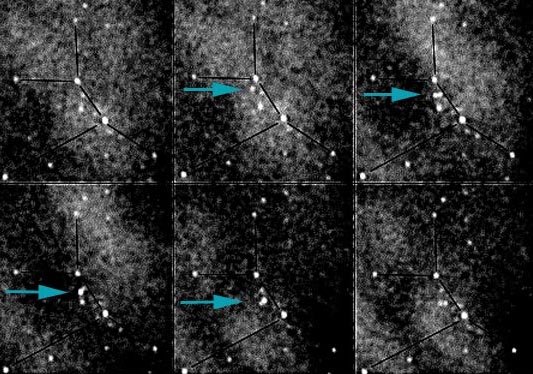
“Last Thursday an interplanetary spacecraft flew right past the Earth. The above images show sunlight momentarily reflected from this spacecraft's solar panels. No aliens were involved - the Near Earth Asteroid Rendezvous (NEAR) mission actually originated from Earth. Launched in 1996, NEAR zipped past the asteroid 253 Mathilde last June. This Earth flyby gravitationally deflects NEAR onto a trajectory passing the asteroid 433 Eros next year. Above, NEAR appears to move through the constellation of Perseus, as clouds created a changing diffuse white glow. NEAR was only visible for about 2 minutes from San Jose, California, where these image-intensified video camera observations were taken."
Copyright: NASAARCLeonid98
#953 The Great Nebula in Orion January 27, 1998
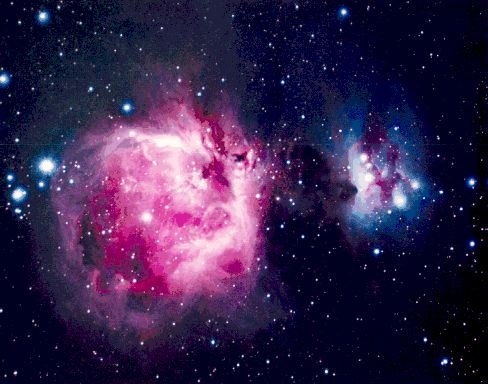
“The Great Nebula in Orion can be found just below and to the left of the easily identifiable belt of three stars in the popular constellation Orion. This fuzzy patch contains one of the closest stellar nurseries, lying at a distance of about 1500 light years. In the above picture, the red region on the left consists of nebulae designated M42 and M43 and contains the bright Trapezium open cluster. The blue region on the right is a nebula primarily reflecting the light from internal bright stars. Recent observations of the Orion Nebula by the Hubble Space Telescope have located solar-system sized star-forming regions."
Copyright: J. Ware
#954 The Infrared Sky January 28, 1998
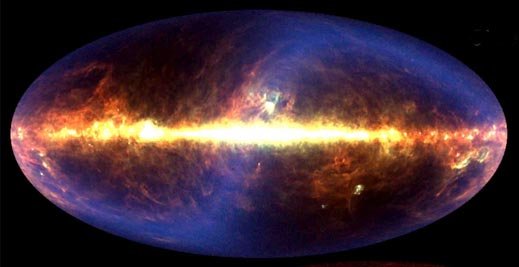
“Three major sources contribute to the far-infrared sky: our Solar System, our Galaxy, and our Universe. The above image, in representative colors, is a projection of the entire infrared sky created from years of observations by the robot spacecraft COBE. Our Solar System is evidenced most prominently by the S-shaped blue sash called zodiacal light, created by small pieces of rock and dust orbiting between the Sun and Jupiter. Our Galaxy is evidenced by the bright band of light that crossed the middle of the image, created mostly by dust that laces the disk of our Milky Way. Close inspection of the image reveals that the background is not completely dark, indicating that our Universe itself provides a diffuse glow, created by the dust left over from the star formation throughout the Universe."
Copyright: Public domain
#955 The Earth-Moon System January 29, 1998
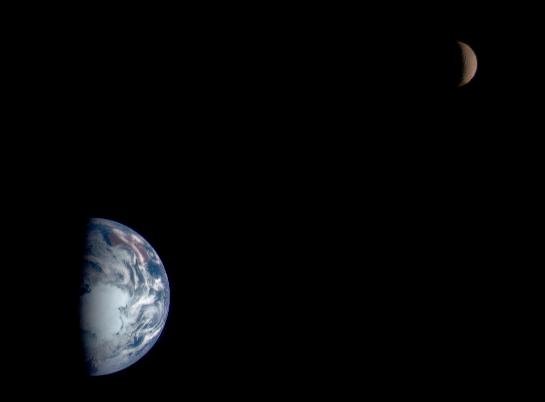
“This evocative mosaic image of the Earth-Moon system was recorded by NASA's Near Earth Asteroid Rendezvous (NEAR) spacecraft earlier this month. The relative sizes shown are appropriate for viewing both the Earth and Moon from a distance of about 250,000 miles, although the apparent brightness of the Moon has been increased by about a factor of five for the sake of appearances. This space-based perspective is a unique one, the bland and somber Lunar Southern Hemisphere contrasting strongly with blue oceans, swirling clouds, and the bright icy white continent of Antarctica on planet Earth. Though its lack of atmosphere and oceans make it relatively dull looking, the Earth's moon is one of the largest moons in the solar system - even larger than the planet Pluto. During this recent flyby of the Earth-Moon system, the NEAR spacecraft used Earth's gravity to deflect it towards its ultimate destination, the Asteroid 433 Eros. It is scheduled to arrive at Eros in January 1999."
Copyright: Public domain
#956 Tempel-Tuttle: The Leonid Comet January 30, 1998
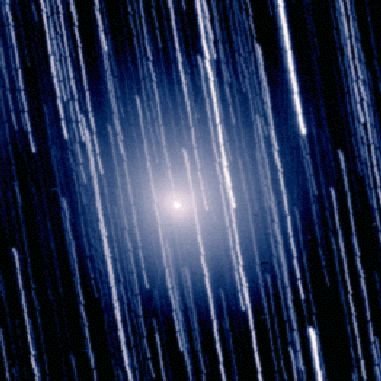
“Star trails streak this composite time exposure of Comet Tempel-Tuttle recorded by T. Puckett on January 26. Presently passing through the inner solar system on its 33 year orbit around the Sun, Tempel-Tuttle has brightened unexpectedly, but binoculars or small telescopes are still required to visually observe it. Tempel-Tuttle is also called "the Leonid Comet" as the yearly Leonid meteor shower results when the Earth crosses this comet's orbital plane and encounters cometary dust. So, while not currently rivaling the spectacle of a Hyakutake or Hale-Bopp, Tempel-Tuttle may still put on a show. When the Earth plunges through Tempel-Tuttle's debris tail in November of this year, many sky-watchers are anticipating an extremely active meteor shower to result, perhaps even a meteor storm!"
Copyright: T. PuckettPuckett Observatory
#957 Hamlet of Oberon January 31, 1998
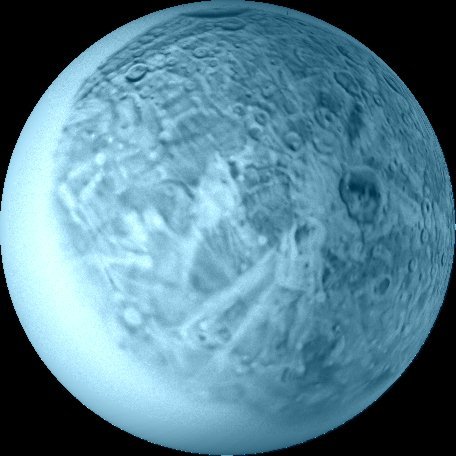
“What's in a name? Since 1919, the International Astronomical Union has been charged with the task of establishing "conventional" nomenclature for planets, satellites, and surface features. For the remote Uranian system of moons, namesakes from Shakespearean works have been chosen. Thus Oberon, king of the mid-summer night fairies, is also Uranus' most distant and second largest moon. Hamlet is the tragically dark, large and princely crater on its surface (right of center). The above image represents known surface features of Oberon and was constructed by the U.S. Geological Survey (USGS) based on data from NASA's robot explorer Voyager 2. In 1986, Voyager 2 flew through the Uranian system - so far it has been the only spacecraft to do so."
Copyright: Public domain
#958 NGC 1977: Blue Reflection Nebula in Orion February 01, 1998
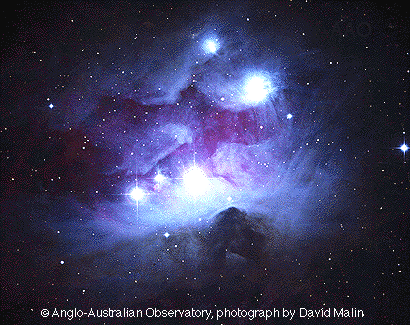
“The Orion Nebula is visible to the unaided eye as a fuzzy patch near the famous belt of three stars in the constellation Orion. The above picture captures a part of the Orion Nebula that primarily reflects light from bright Orion stars. This reflection nebula appears blue because the blue light from the neighboring stars scatters more efficiently from nebula gas than does red light. The dark lanes are composed of mostly interstellar dust - fine needle-shaped carbon grains."
Copyright: Anglo-Australian Telescope
Board
Upvote! Resteem! Comment! As you like it! Thank you for attention!